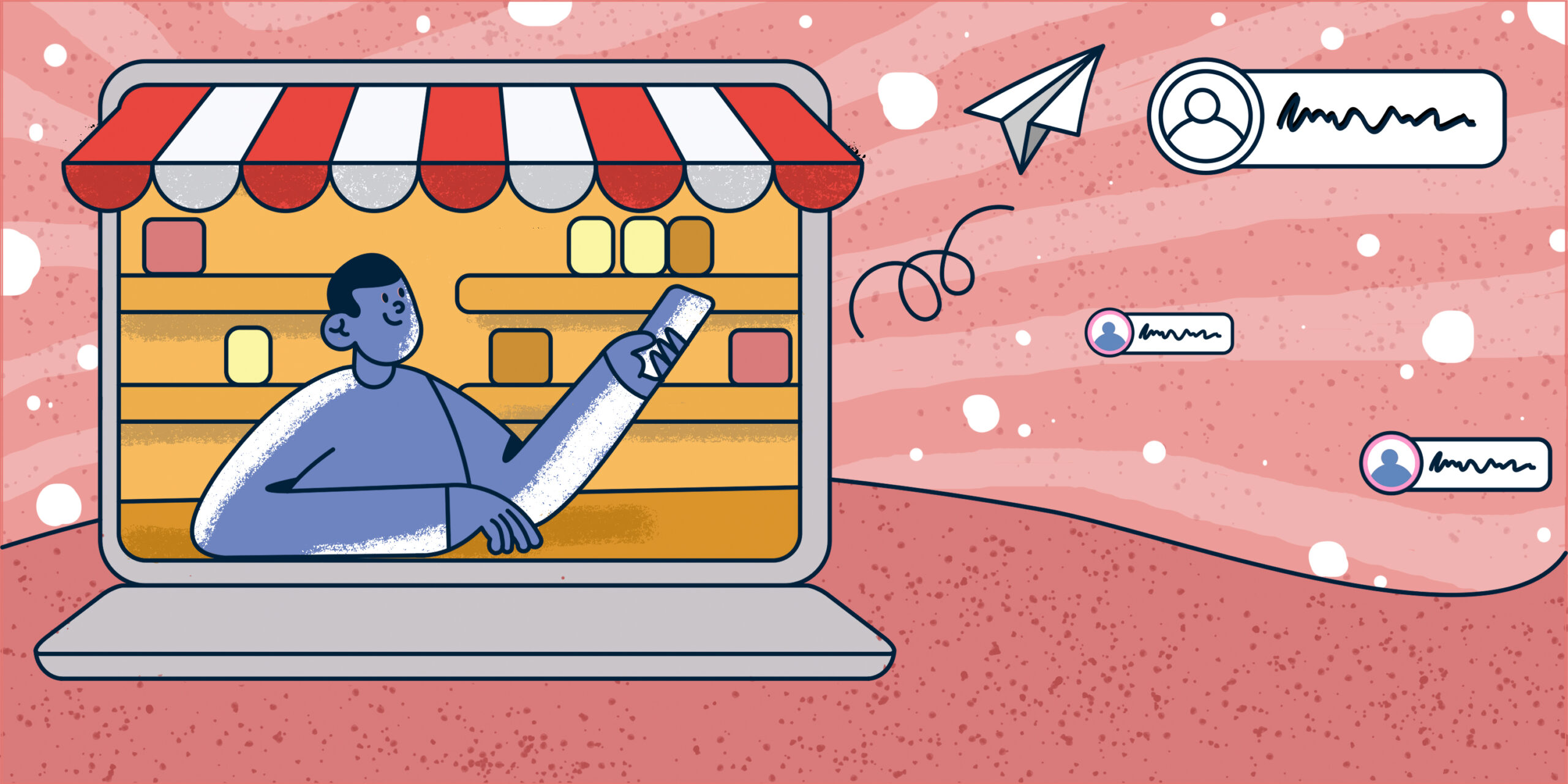Though the product of heavy thinking, purchasing decisions rarely depend solely on logic. Like any other field where communication and personal interaction play a role, sales (B2B sales, in particular) are all about how persuasive you are.
In other words, it all depends on what psychological tricks you use to make prospects understand they do need your offering.
Without any exaggeration, psychology can be called the skeleton of successful sales. And I wish businesses gave it more attention, really. Diving a bit deeper into a customer’s mind and finding those keys that will help you unlock the doors to their hearts seems like a great adventure, and it IS worth your time.
Let’s go on this adventure together, and I’m sure you’ll get the answers to many questions at the end.
Outline:
The psychology of B2B decision-making
Not a single sales process goes well unless you start it with identifying your ideal customer profile. But there’s something even prior to this first step – you should know how people you are going to target function from a psychological perspective. Translating it into the sales language, you should understand how your sales leads make buying decisions.
There are several postulates here.
#1. B2B sales leads make final purchasing decisions emotionally
People are all products of logic and emotions, but when it comes to sales, science is rigid: 95% of purchasing decisions are subconscious and based on feelings. Actually, according to numerous studies by neuroscientists, people whose brains are damaged in the area that generates emotions are incapable of making decisions.
It doesn’t mean that reasoning has nothing to do with making decisions. In reality, B2B deals do start with reasoning, whereby leads, having certain expectations of the product or service, will evaluate your solution based on how well it fulfills their needs and solves their pain points.
But it is the emotions that drive prospects to make the final buying decision.
What does it tell you?
Suppose your potential customer chooses between you and your competitor, and both equally satisfy the prospect’s needs. In that case, your ability to appeal to their feelings will be your competitive advantage, so you’ll have more chances of winning the sale.
#2. B2B sales leads need emotional validation
Not only do customers make purchase decisions based on emotions, but they also want sales reps to validate them from the very beginning.
Emotional validation is showing someone you accept their feelings. When the kid is crying over the broken toy or something they failed to do, the last thing a parent can do is start telling them that the situation isn’t worth their frustration. In fact, adults also need their emotions to be validated, and so do your B2B sales leads. About 68% of customers expect brands to demonstrate empathy.
By validating your customers’ feelings, you demonstrate that you care about what they feel, which helps you build stronger relationships with them.
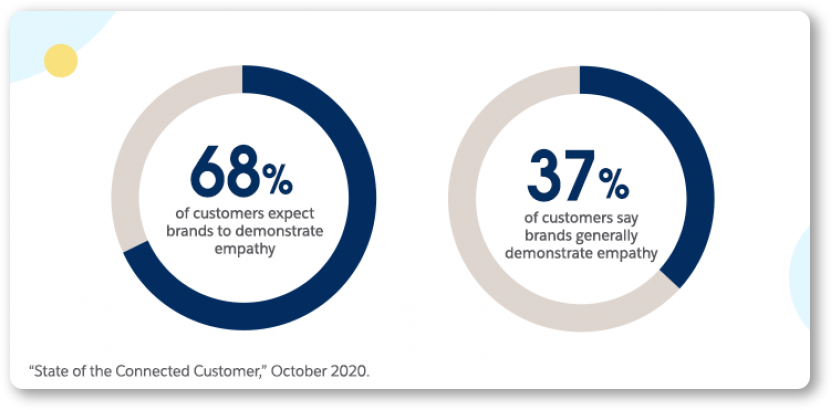
How can you show it in practice?
Be a good listener. Pay attention to all of your lead’s feelings and let them know it’s totally okay to experience them.
For instance, if your prospective customer confesses to you that the problem they’re having at the moment makes them frustrated, tell them you understand what they feel and that it’s normal to experience these feelings and emotions. Remind them that you are here to help.
#3. B2B sales leads want personalization
We all want to feel special. And if you think that this psychological aspect pertains to B2C relations rather than B2B, I have to disappoint you.
In B2B, you should try not less hard: 84% of decision-makers said that being treated like a person was a top factor in winning their business. Not to mention 72% of B2B customers expect a deep understanding of their needs, reflected through a customized experience.
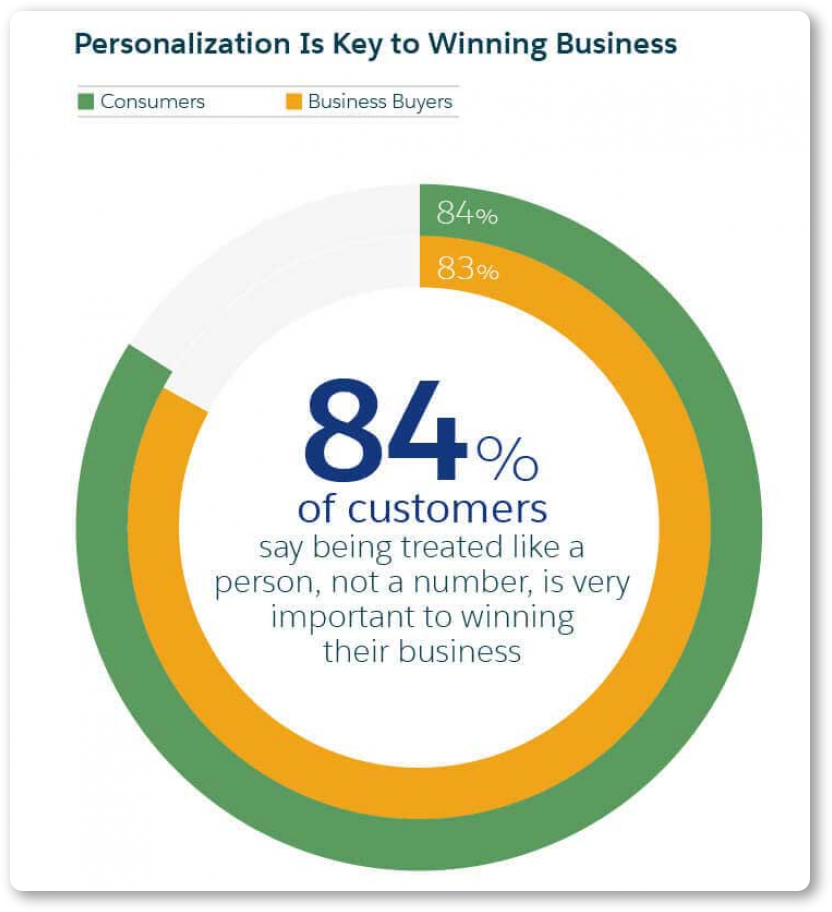
How to show your leads they are special?
First of all, ensure you have a personal approach to every lead. Tailor each message you send and each piece of information you share to the needs of a particular customer.
Second, provide top customer service. Use as many channels for communication with your leads as possible, respond immediately to your lead’s inquiries, all with a single aim – to show them you are the company that cares, the one they can rely on.
#4. B2B sales leads look for expertise
Imagine taking dancing lessons or any other course. When you pay for them, what do you really pay for? You don’t simply give your money to a person who looks like a tutor, do you? The truth is you pay a person who helps you grow from a butterfingers into an elegant dancer, i.e., helps you fix your problem.
Same with your B2B sales leads. They look for some help with a problem they can’t solve on their own. They want to see you as a person who knows exactly what should be done about that – an expert.
What can you do to be perceived as an expert by your sales leads?
- Be assertive. Don’t be afraid to state what your leads need to solve their problem. Tell them everything they should know clearly and confidently.
- Be calm. You may face many sales objections on your way to winning the prospect’s heart. Be imperturbable and talk slow enough for them to see you are sure about every word you utter.
- Listen. Openness to your interlocutor’s opinion is another sign of your being an expert as you demonstrate you are not afraid of facing objections and arguments.
- Mind your language. Avoid speech patterns that may create the impression you lack confidence, something like “I’m not sure,” “Probably,” etc.
#5. B2B sales leads want to build trust
B2B sales rest on building meaningful relationships between two parties, a seller and a buyer. And what are all relationships based on? Trust, of course. But only 3% of buyers trust sales reps, which tells us trust is the aspect of sales psychology we should better understand.
So what does the prospect’s trust ground on?
Prospects should feel what you are telling them is right. Make sure you support your assertions with evidence of success. For example, provide testimonials of how your solution helped other companies achieve their goals. That will be a sign of your product’s effectiveness for them.
Speak with numbers (e.g., how much your customer’s revenue grew after they’d purchased your product) to gain more credibility in the eyes of your leads. Avoid phrases that may ruin their trust.
Another critical aspect of building rapport is creating friendly relationships with your prospects. You’ll better cope with it when you reveal your human side. Show your personality and share your past experience and feelings similar to what your lead is going through. That will help you create a sort of bonding with your potential customers.
#6. B2B sales leads care more about value than pricing
Although pricing is without a doubt an important criterion for making a buying decision, the fact is that your B2B sales leads wouldn’t necessarily choose your product if you offer the lowest price among competitors.
What your B2B customers place priority on is the value and return on investment they’ll get from buying your product.
What can you do about it?
Instead of offering the lowest price, focus more on the unique benefits your solution can bring to your clients. And if you use product comparisons as a part of your marketing or sales strategy, think about how your product stands out from the competition because of its features and functionality rather than just pricing. Talk about pricing between the lines.
Psychological types of buyers
Now that we’ve discussed the psychological aspects of B2B buyers, I suggest looking at the buyer’s psychological portrait you might come across in sales. Knowledge about buyer personality types is key to assessing your audience, targeting the right leads, and ultimately closing more deals.
What may help you is the DISC color assessment model. With it, you can assess your potential and existing customers using color schemes, every color corresponding to certain characteristics:
D = Dominant
I = Influencing
S = Steady
C = Cautious
By visualizing the psychological portrait with color, you will better understand how each buyer type makes purchase decisions, so you can adjust your interactions with them accordingly.
Let’s take a closer look at this model.
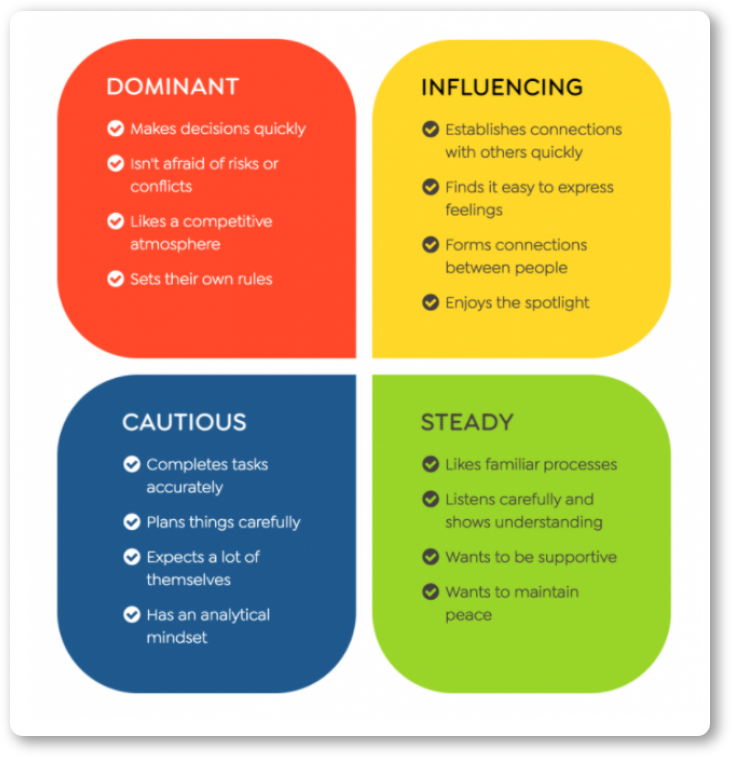
Dominant leads
Dominant or red leads are usually impulsive in actions and quick in making decisions. They like to be active during meetings, speak loudly, often interrupt an interlocutor, and stick to their own rules. They are persistent and don’t stop until they get what they want. Therefore, for a salesperson, they often look stubborn and challenging to influence – in fact, they like influencing others themselves.
|
How to sell to dominant leads:
|
Influencing leads
Influencing or yellow leads are usually sociable and easy-going people who like gatherings, being in the spotlight and entertaining others. That’s why they themselves can be good salespeople with a talent for influencing others’ decisions. As leads, they may be pretty enthusiastic about discussing your offering in an informal way. However, likely, they won’t pay much attention to details and, just like dominants, would prefer to talk more than to listen.
|
How to sell to influencing leads:
|
Steady leads
Steady or green leads are usually calm peacemakers that don’t like arguments or heated debates. Sometimes that is the reason they can hardly say ‘No.’ However, their absence of ‘No’ won’t necessarily mean ‘Yes,’ so you should take it into consideration while selling to them.
Like yellow leads, green buyers are friendly, supportive and prefer an informal, conversational style. However, unlike the two previous types, they like listening and do it carefully. So don’t wait for them to make quick decisions. They need to trust your company to make decisions and might need to consult with their team members prior to giving the final word.
|
How to sell to steady leads:
|
Cautious leads
Cautious or blue leads are the most careful type of buyers. They are well-organized, detail-oriented people with analytical skills who pay lots of attention to quality and never make impulsive decisions. Instead, they do thorough market research and evaluate all product features. In the sales conversation, they are inclined to ask many questions and take notes. Don’t expect their decisions to be quick – cautious leads will need time to mull it all over.
And if you approached the stage of making your sales proposal, for these leads, written sales proposals are better than their verbal counterparts because blue leads will require recording all claims on a permanent basis.
|
How to sell to steady leads:
|
Psychological tricks for successful selling
B2B sales are much more exciting and promising if you look at them from the perspective of psychology.
And now that you can better feel your leads and know how your sales approach may differ depending on the type of buyer you deal with, it’s high time you enriched your sales campaigns with some psychological tricks for getting your potential customers on the hook. 😉
Use social proof
It’s not a new fact that in B2C, buyers make their purchase decisions based on how other people like a product. But I can say this psychological trend pertains to B2B sales as well.
Don’t hesitate to place positive reviews of your product on your landing page and encourage your happy customers to say a good word about your company on popular platforms (e.g., for SaaS products, such platforms are G2, Capterra, etc.). Besides, you can add testimonials or success stories to your website or send similar use cases to hesitant leads.
For example, here at Snov.io, we have a special page dedicated to our customers’ case studies for prospects to see how our product helped companies like theirs solve similar problems.
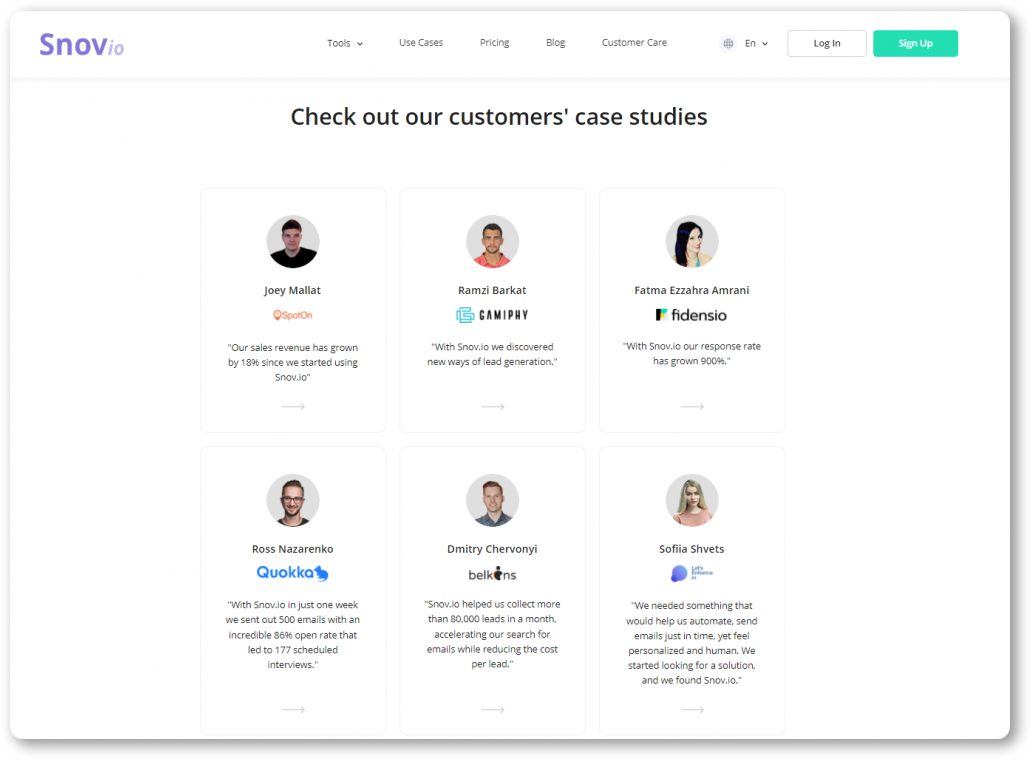
Utilize the FOMO effect
FOMO, or “Fear of missing out,” is one of the burning psychological trends of our society, which refers to the feeling of anxiety caused by the perception you’re lagging behind others.
As a sales professional, you can use the human instinct of catching up with the time and make a limited offer to those customers who are in doubt, encouraging them to make a buying decision … well …. a little bit faster.
For instance, MonsterInsights have created a feeling of urgency by offering their customers a compelling discount and setting a time limit to help more users switch to a bigger plan.
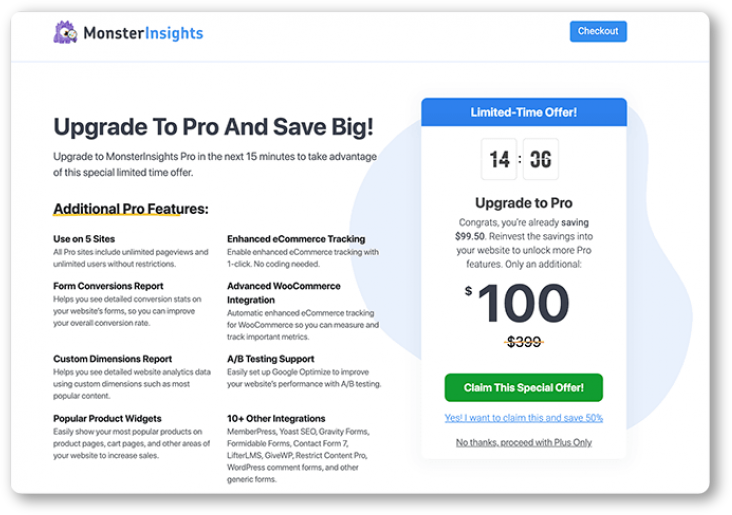
Do your leads a favor
The principle of reciprocity works well when you are doing a favor to somebody. They wish to do you a favor in return.
In the context of B2B sales, by offering your potential customers a free trial or a testing account of your product, you’ll do them a favor – help them solve one of their problems for free. Customers will appreciate it, so encouraging them further to buy one of your paid plans will be much easier: they’ll have a feeling they need to return you a favor (remember?) and see that your solution indeed copes with their current challenges.
For instance, when thinking about what favor Snov.io can do to our leads before they even try our solution, we’ve decided to give them a possibility to test our Email Finder right on the landing page.
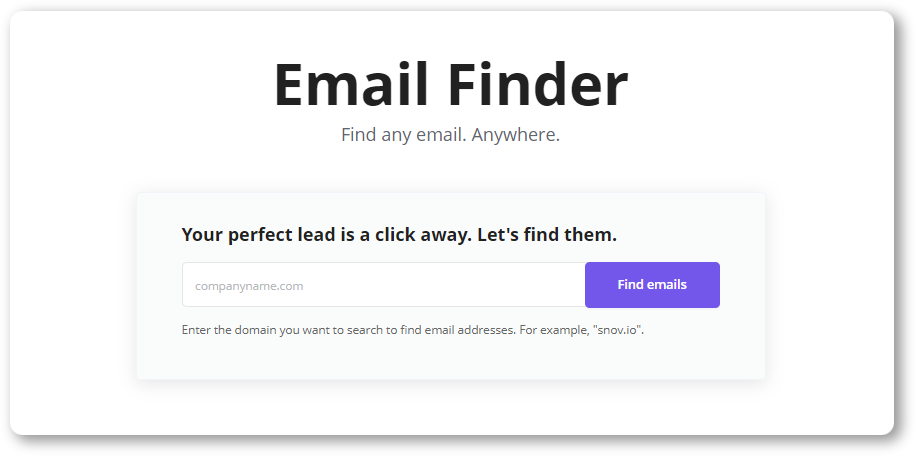
This allows our prospects to see the benefits of our tool in action, speaking louder than any words we use to describe its features and advantages.
Use NLP techniques
I can’t help mentioning the role of NLP, or Neuro-Linguistic Programming, in sales psychology. Using NLP sales techniques boils down to finding specific phrases, strategies, and behaviors that influence how prospects feel about your offering.
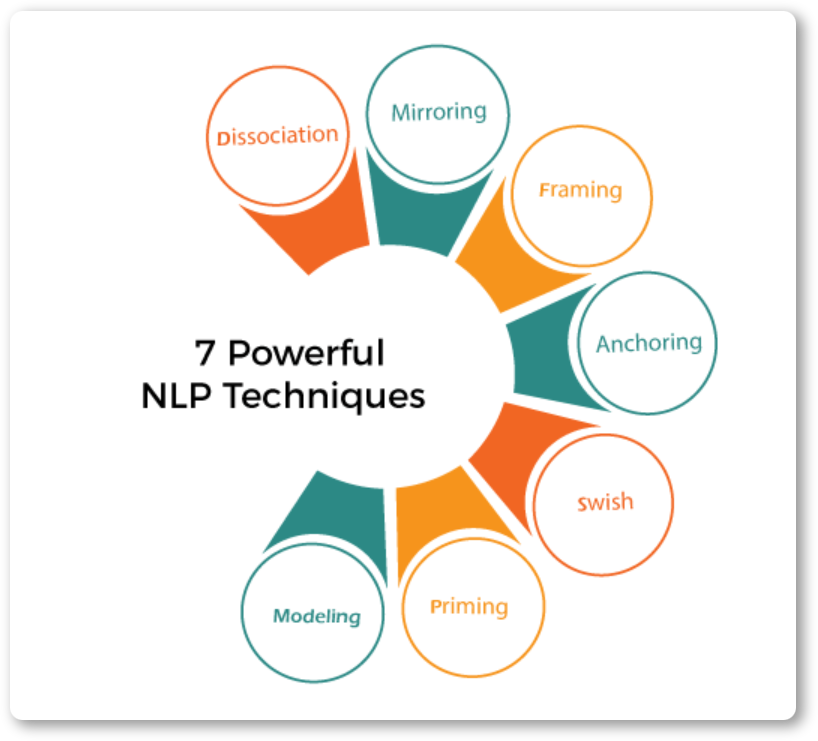
As 55% of the effectiveness of your communication comes from sales body language, you can adjust it to your prospect’s behavior using mirroring. This NLP technique presupposes that you pay attention to their intonation, gestures, facial expressions and act in a similar way, making your sales prospect feel more comfortable and accepted.
To produce a positive impression on your lead, you can also use positive priming. This NLP technique that consists in finding such words and expressions that will create positive energy around your conversation, so your prospect will associate your brand with this first positive experience, e.g., words like “opportunity,” “solution,” “potential,” “achieve goals,” “success,” etc.
Wrapping up
Sales are more about building relationships than selling itself. However, building meaningful relationships with your potential customers is not an easy game. If you understand the psychological aspects of your B2B sales, can differentiate your leads, and know what induces them to make a purchase, you get an incredible number of new sales opportunities, becoming a sales pro who knows which strings to pull.
You have wonderful innate soft skills to help you better understand your customers, so do use them! And don’t worry about the technical part – sales automation tools and CRMs like Snov.io will handle it with ease.



